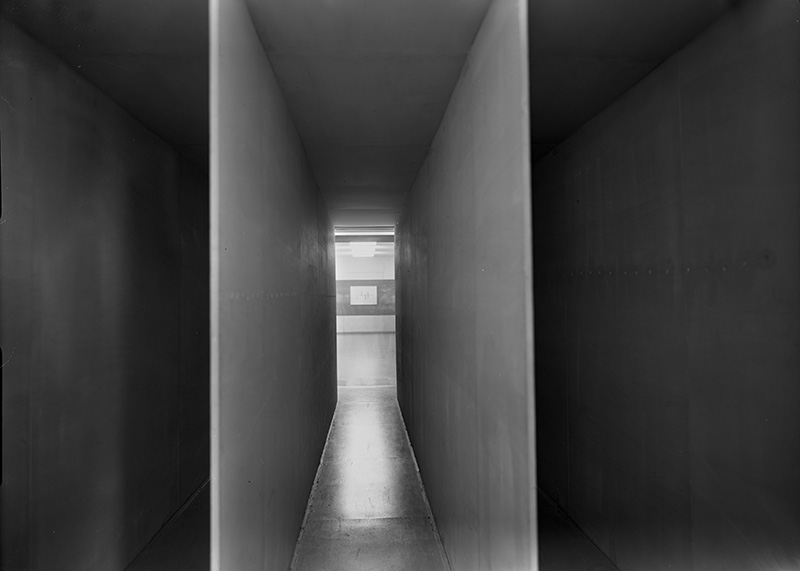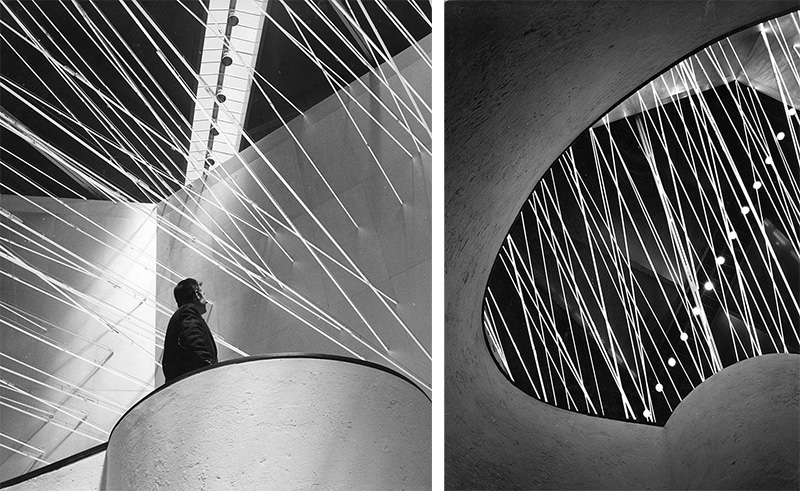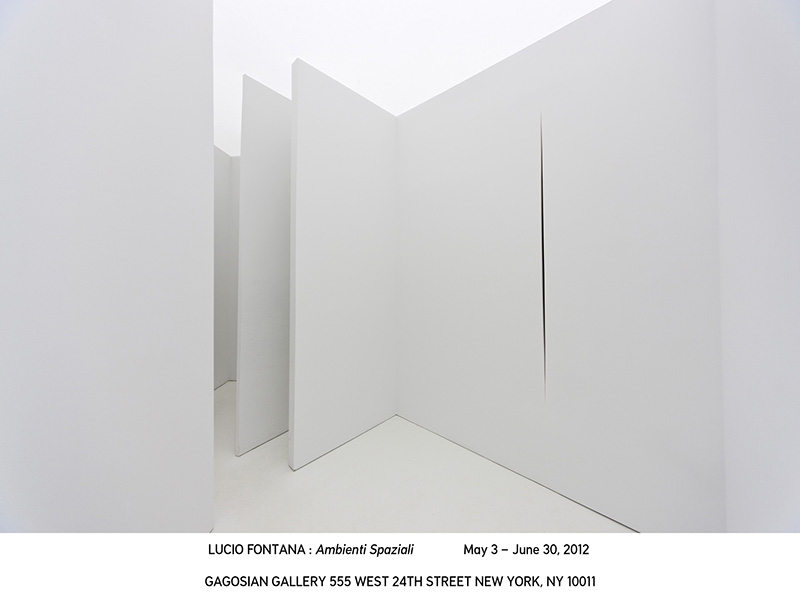ART-PRESENTATION: Lucio Fontana-Ambienti
 Lucio Fontana dedicated his entire career to investigating the concepts of space, light, the void and the cosmos through the use of the most varied materials amongst which ceramic, plaster, cement and paint. He extended the boundaries of art through an awareness of new technology, such as neon and UV light, and new media such as television.
Lucio Fontana dedicated his entire career to investigating the concepts of space, light, the void and the cosmos through the use of the most varied materials amongst which ceramic, plaster, cement and paint. He extended the boundaries of art through an awareness of new technology, such as neon and UV light, and new media such as television.
By Dimitris Lempesis
Photo: Pirelli HangarBicocca Archive
Within a low-light setting, the exhibition “Ambienti” (Environments) at Pirelli HangarBicocca in Milan presents a series of Lucio Fontana’s “Spatial Environments” in independent rooms specifically designed by the artist. These environments are considered the most innovative outcome of the theories about space that he first expressed in his “Manifiesto Blanco” (1946). Here and in his later manifestos, he described a new form of visual representation linked to space and time, which would move past the classic materials of sculpture and painting. Trained as a sculptor, Lucio Fontana introduced the third dimension to his canvases first by puncturing them with holes in 1949 and then, from 1958, performing his most famous gesture: the cut. The exhibition opens with “Struttura al neon per la IX Triennale di Milano” (1951), which Fontana conceived as a decorative element for the 9th Milan Triennale. This vast arabesque, made up by hundred-meters-long neon tubes, hangs at the entrance to the exhibition space, ushering visitors into the series of environments, displayed in chronological order. They start with the first one the artist made, “Ambiente spaziale a luce near” (1948-49), presented at Milan’s Galleria del Naviglio in 1949. It is a dark room lit by an ultraviolet lamp; suspended at the center is an abstract sculpture painted with fluorescent colors. This work marks a move past the very notion of painting and sculpture. The work was too innovative to be widely understood and Fontana tried to repeat the experiment to no extent for a decade. He had to wait till the 13th Milan Triennale in 1964, where he created two corridors, “Utopie” made in collaboration architect Nanda Vigo. One is black, with a curved wall and green neon light filtering through a series of holes. The other, reconstructed here for the first time, has metallic red upholstery covering the walls and ceiling, textured glass panels, and red neon. These two works begin to foreground the perceptual experience of the visitor, an aspect that Fontana also focused on in an installation for his first and only large-scale solo sexhibition at an AmericanMmuseum, the Walker Art Center, in 1966. The next three works: “Ambiente spaziale”, “Ambiente spaziale con neon” and “Ambiente spaziale a luce rossa”, all reconstructed for the first time at Pirelli HangarBicocca, were originally conceived for the European tour of the American solo exhibition and presented in 1967 at the Stedelijk Museum and later at the Van Abbemuseum. The last environment, “Ambiente spaziale in Documenta 4, in Kassel” (1968) has been installed at the end of the chronological sequence in the Navate, since it dates from the year of the artist’s death. The exhibition winds up in the Cubo space with the second environmental intervention “Fonti di energia, soffitto di neon per “Italia 61, a Torino”, a monumental work made from seven levels of colored neon tubes, which Fontana designed for the Energy pavilion at the celebration for the centenary of the Unity of Italy in Turin in 1961. This environmental work foreshadowed American and European investigations of the viewing experience and the relationship between object and space.
Info: Curators: Vicente Todolí, Marina Pugliese and Barbara Ferriani, Pirelli HangarBicocca, Via Chiese 2, 20126 Milan, Duration:21/9/17-25/2/18, Days & Hours: Thu-Sun 10:00-22:00, www.hangarbicocca.org





